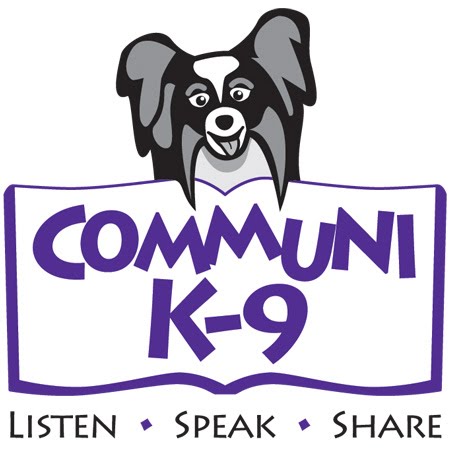I shared this form below today with a family who is looking for an appropriate school program for their student. It's a great form and thought I should share it here.
I have also developed my own 4 page form that looks at curriculum, staff, specials, modifications and more. Email me at Sue@CommuniK-9.com and I'll send it to you.
Resource 6
Program Evaluation Form
Name of Program______________ Person making the rating___________
The
following are key indicators of a quality program for students with autism.
Rating Scale Priority
Ratings
0 = There
is no or minimal evidence that this A
= Needs immediate attention, of the
is happening highest priority
1 = There
is some evidence that this is happening B
= Important issue to address, but not
with at least some of the staff or some of the
time. Immediate or urgent
2 = This
clearly happening with most of the staff C
= Not important or relevant now, but
most of the time. need to monitor for the future
|
Quality
|
Indicators
|
Priority
|
|
|
|
1. Goals
and objectives emphasize the functional use of language and communication in
natural contexts, not simply teaching isolated speech and language behaviors.
|
|
|
|
|
2. Goals
and objectives are functional (the skill makes a difference in a child’s
life) and match the developmental level areas of need.
|
|
|
|
|
3. The child’s emotional regulation and its
effect on communication and learning are consistently considered and arousal
stated are monitored constantly.
|
|
|
|
|
4. Approaches to problem behavior are fully
integrated with social communication programming.
|
|
|
|
|
5. Meaningful and purposeful activities are
targeted daily.
|
|
|
|
|
6. More
than one objective is targeted for each child within each activity, and each
objective is targeted within more than one activity.
|
|
|
|
|
7. Data
are collected regularly and tallied weekly so that all objectives are
measured weekly.
|
|
|
|
|
8. There
is sufficient time available for the team to meet regularly to coordinate
programming.
|
|
|
|
|
9. The team meets regularly to collaborate, (written
records, jobs targeted, people responsible noted.)
|
|
|
|
|
10.
Adjustments in programming are considered at least quarterly based on the
data collected.
|
|
|
|
|
11. The staff monitors the intensity of each
child’s program and documents that each child is actively engaged in
productive learning activities during school hours. 25 hours per week should
be the goal.
|
|
|
|
|
12.
Adults are responsive to children’s communication and emotional expression in
all learning environments.
|
|
|
|
|
13.
Adults encourage children’s initiation by offering choices, waiting, and
facilitating shared control.
|
|
|
|
|
14.
Breaks and time for problem solving is allowed.
|
|
|
|
|
15.
Problem behavior is interpreted as meaningful.
|
|
|
|
|
16. Protests are honored when appropriate and
possible.
|
|
|
|
|
17.
Adults adjust language complexity and quality to match each child’s
developmental level.
|
|
|
|
|
18.
Adults model appropriate language, communication, play, and behavior
|
|
|
|
|
19.
Activities are structured throughout the day to encourage children’s active
participation.
|
|
|
|
|
20.
Augmentative systems are used to foster expression and understanding of
language and emotion.
|
|
|
|
|
21.
Adults use visual and organizational supports to encourage children to
participate in activities and promote smooth transitions across activities.
|
|
|
|
|
22.
Goals, activities, and the learning environments are modified to promote
initiation of communication, emotional regulation, motivation, and
independence.
|
|
|
|
|
23. A
priority is placed on the development of mutually respectful, positive
parent-professional relationships.
|
|
|
|
|
24. Staff
participates in professional development activities within the school that
are designed to further develop the staff members’ knowledge and skills.
|
|
|
|
|
25. Staff participates in professional
development activities outside the school setting, such as attending regional
or national conferences and workshops.
|
|
|
|
|
26. Professionals and paraprofessionals receive
specific and direct instruction and supervision as needed regarding their
responsibilities to students.
|
|
|
|
|
28. Sufficient staff is available to provide
the support necessary to accomplish IEP goals and carry out other
programmatic responsibilities.
|
|
|
|
|
29. Staff are monitored, evaluated, and given
feedback regarding their effectiveness with students and participation as
team members.
|
|
|
|
|
30. Written behavior support plans are
developed and implemented.
|
|
|
|
|
31.
Reinforcement menus are posted
|
|
|
|
|
32 .A
specific plan is in place for facilitating social interaction between student with autism and peers.
|
|
|
|
|
33.
Appropriate environmental modifications have been made.
|
|
|
|
|
34. Materials and activities are developmentally
appropriate and functional
|
|
|
|
|
35.
Differential reinforcement is used as appropriate (circle) (DRO
DRA DRI DRL)
|
|
|
|
|
36. Plans
are in place for fading prompts and reinforcement as appropriate.
|
|
|
|
|
37. Discrete trial teaching is used as appropriate
|
|
|
|
|
38.
Visual supports are present and consistently used.
|
|
|
|
|
39. A plan is in place and implemented for
regular communication with the parents/family
|
|
|
|
|
|
|
|
An action
plan should be formulated and a time line developed to improve any priorities
with ratings of A or B.

No comments:
Post a Comment